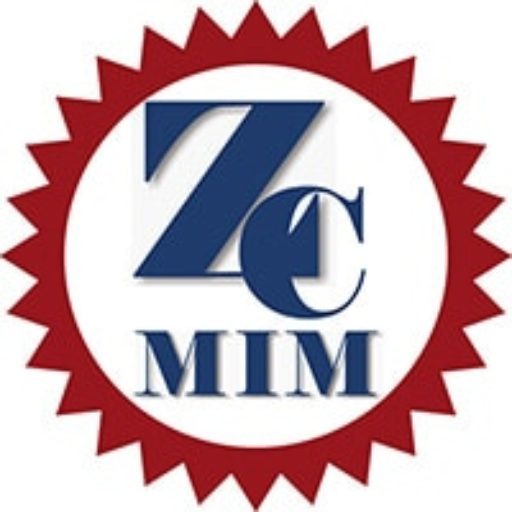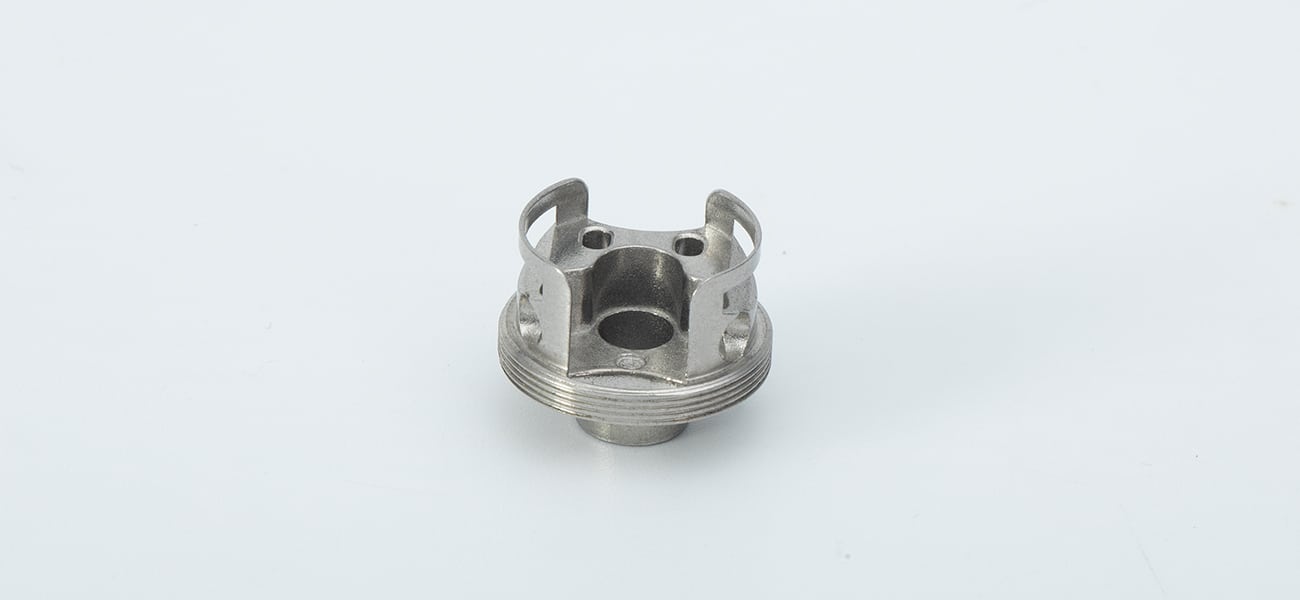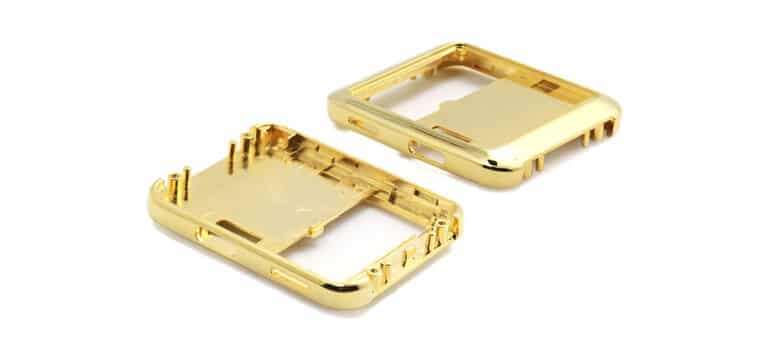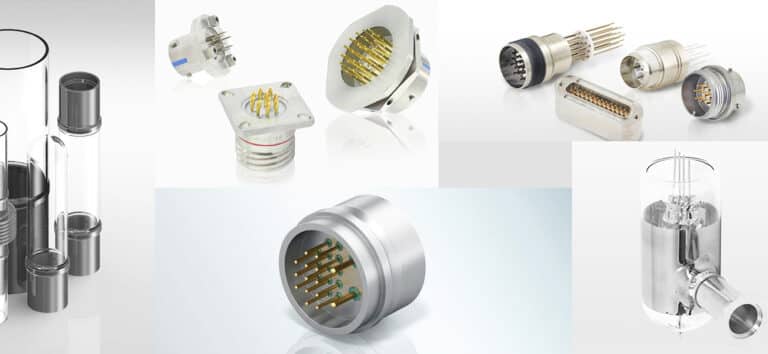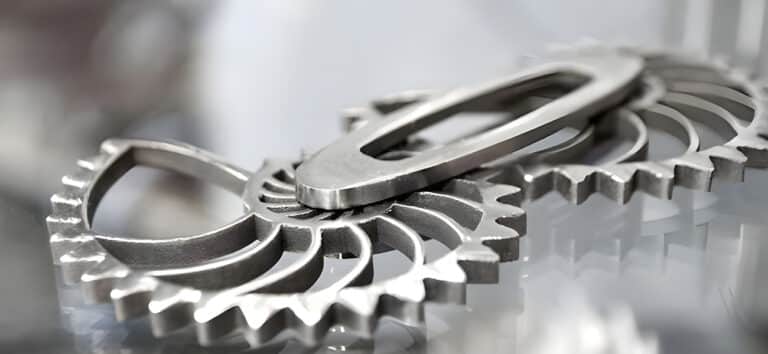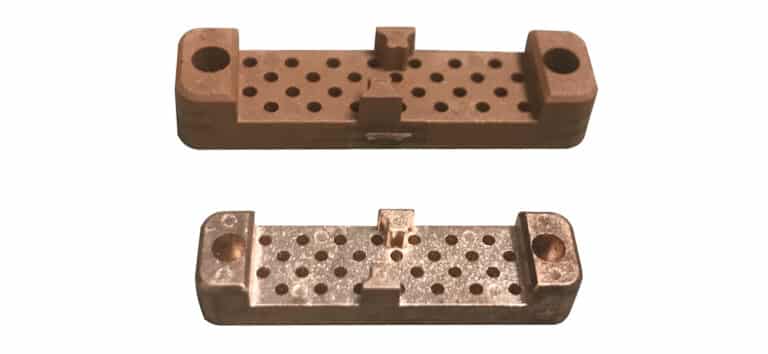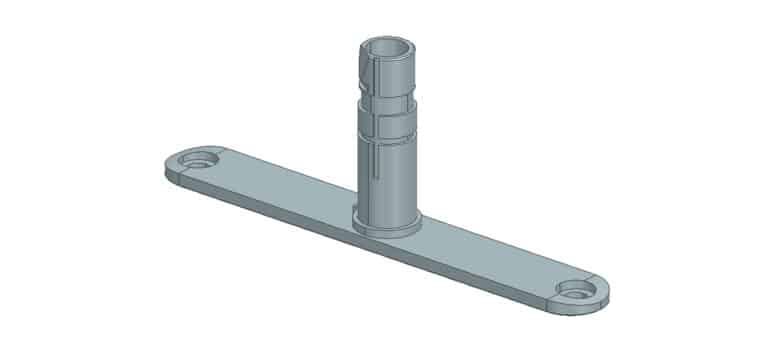FeNi36
Introduction
FeNi36 is also known as Invar 36, or Invar alloy. It is an iron-nickel alloy with 36% Ni and balanced Fe. Invar alloy has the uniquely low co-efficient of thermal expansion (CTE), this makes Invar alloy used in many precision instruments.
FeNi36 has the lowest thermal expansion among all metals and alloys in the temperature range (room temperature to approximately 230℃). This alloy is ductile and easily weldable, it has similar machinability as the austenitic stainless steel without stress corrosion cracking.
Common Chemical Composition
| FeNi36 (Invar) | Iron | Nickel | Manganese | Silicon | Carbon | Sulphur | Phosphorus |
| Percent by Weight | Bal. | 35.0-37.0 | 0.20-0.60 | 0.30 | 0.05 | 0.02 | 0.02 |
Electric & Mechanical Properties
| Material | Density | Resistivity | Thermal conductivity | Elastic modulus | Curie point | Tensile Strength | Elongation(% in 25.4mm) |
| FeNi36 (Invar) | 8.10g/cm³ | 0.78 Ωmm2/m | 11λ/ W/(m*℃) | 144E/Gpa | 230℃ | ≥640Mpa | ≥14% |
Invar Effect
The abnormal low co-efficient of thermal expansion (LCTE) in Invar alloys is call Invar effect (volume INVARiance effect). The physical mechanism of Invar effect is two opposing effects occurs over the specific temperature range. During heating process, the alloy expand naturally, while the simultaneous ferromagnetic-to-paramagnetic transformation will impose a magnetostriction. This will counteract the natural expansion, and result in low expansion. Invar 36 (FeNi36) has one of the lowest CTE of any alloy from room temperature to about 230℃.
The Curie point of Invar alloy is about 230℃. Above this temperature, the alloy is non-magnetic, and the expansion co-efficient will increase. Below this temperature, Invar alloy is ferromagnetic with very low expansion co-efficient. Its special property of very low CTE remains until reaching the Curie point.
FeNi 36 alloy is suitable for components with approximately constant size within the range of temperature changes. It is applied widely in the radio, precision instruments, meters and other industries.
Invar Alloy in MIM
Metal injection molding(MIM) is a popular alternative for micro parts fabrication. The low CTE Invar alloy is suitable for high dimensional stability and acceptable mechanical properties. However, this alloy is sensible of element contamination in MIM debinding and sintering process. We should notice the affection in dimensional stability and mechanical properties.
Element Effect on Properties
Invar 36 has dimensional stability with excellent mechanical properties. But MIM processed FeNi36 alloy has relatively low strength and high ductility. Therefore, addition of elements (Ti, Al, Sn, Carbon) can enhance properties in age-hardening. Small amount of carbon can improve mechanical properties of FeNi36 with acceptable low CTE.
MIM debinding and sintering process, the atmospheres will influence the mechanical and physical properties of Invar parts. Thermoplastic polymers are unable to degrade completely in the bebinding process. The residual carbon elements in further sintering process will alter alloy properties. Therefore, different sintering atmospheres will effect the sinterability, microstructure and elements contamination of FeNi36 MIM parts.
Atmosphere Effect
In order to optimize the final MIM FeNi36 properties, different types of sintered parts with different debinding and sinering atmosphere:
- debinding in vacuum – sintering in vacuum (V-V)
- debinding in vacuum – sintering in hydrogen (V-H)
- debinding in air – sintering in vacuum (A-V)
- debinding in air – sintering in hydrogen (A-H)
Then investigate the micro-structure of sintered parts with scanning electron microscope (SEM) and X-ray diffractometer. Residual carbon and oxygen content are measured by elementary analyzer. Micro-hardness is obtained by micro-hardness tester.
Element Effect on Densification
In hydrogen sintering, there is a higher volumetric shrinkage and a better densification. The porosity distribution is homogeneous, and no original powder particles are absent on part surface. All these result are consistent with low oxygen content in sintered parts, this demonstrates hydrogen can reduce oxides efficiently in sintering process. In addition, carbon contents are higher than original powder particles, there is un-avoided carbon contamination in sintering process.
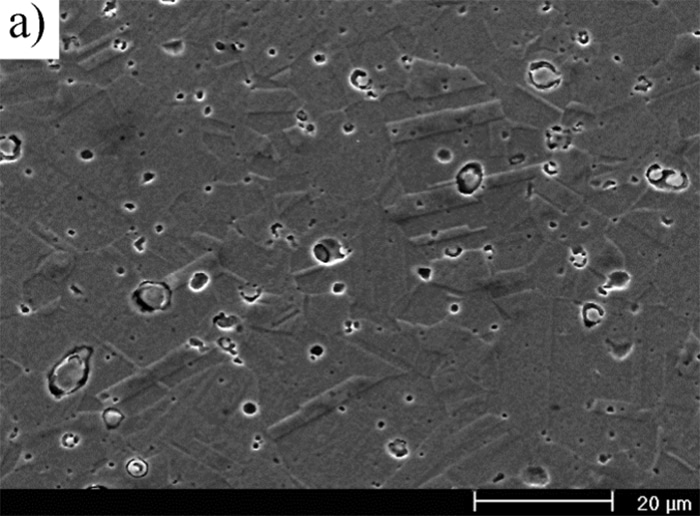
Microstructure in Vacuum Debinding & Sintering
Micro-structure Analysis
There is a clear austenitic microstructure with typical austenite twin bands in different sintering atmospheres. Except the A-V (debinding in air – sintering in vacuum) process condition.
The grain size of the austenite vary depending on the different conditions, the bigger grains are detected on the V-H(debinding in vacuum – sintering in hydrogen) process condition.
Comparing V-V and A-H conditions, the A-V condition has the smallest grain sizes.
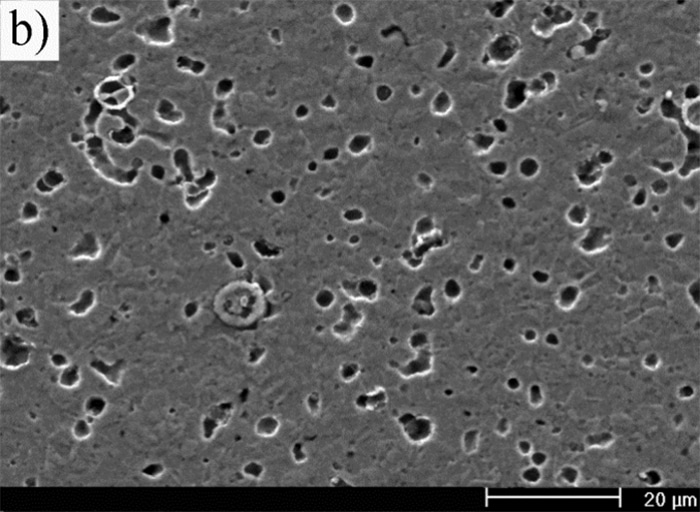
Microstructure in Vacuum Debinding & Hydrogen Sintering
CTE & Curie Temperature
Comparing to the original FeNi36 powders, there is a reduction of Curie temperature in sintered parts, this is associated with interstitial elements of C or H, and Ni segregation. The Curie temperature is influenced by composition and the austenite grain size.
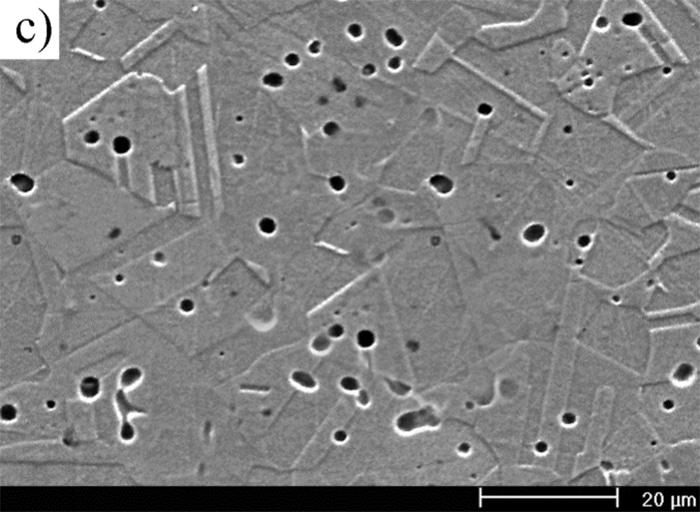
Microstructure in Vacuum Debinding & Hydrogen Sintering
Mechanical Property Effect
Normally, the oxides in final sintered part of FeNi36 will influence the densification, and lead to a detriment of the mechanical properties. The hydrogen atmosphere is effective for the reduction of oxides and part densification, but it is also an interstitial element, this will worsen the ductility, Curie temperature, CTE. The vacuum debinding and sintering are the most equilibrated physical and mechanical properties.
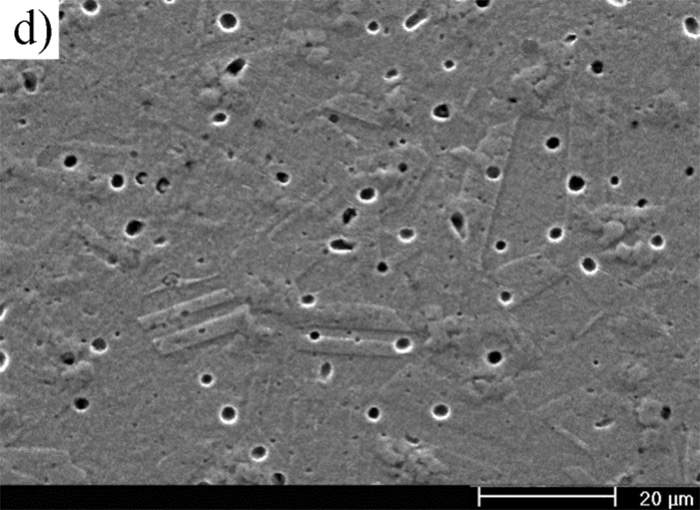
Microstructure in Vacuum Debinding & Hydrogen Sintering
Heat Treatment Process
Stress Relief Annealing
Heat Invar parts to 530-550℃, then keep worm for 1-2 hours, then cool in the furnace.
Annealing
Heating to 830-880℃,keep for 30 minutes, then furnace cooling.
Stabilization
Heat to 830℃ in protective atmosphere, keep 20 min to 1 hour for quenching, then tempering.
Common precaution: Invar alloy is unable to hardened by heat treatment, the common surface treatments are sandblasting, polishing, pickling.
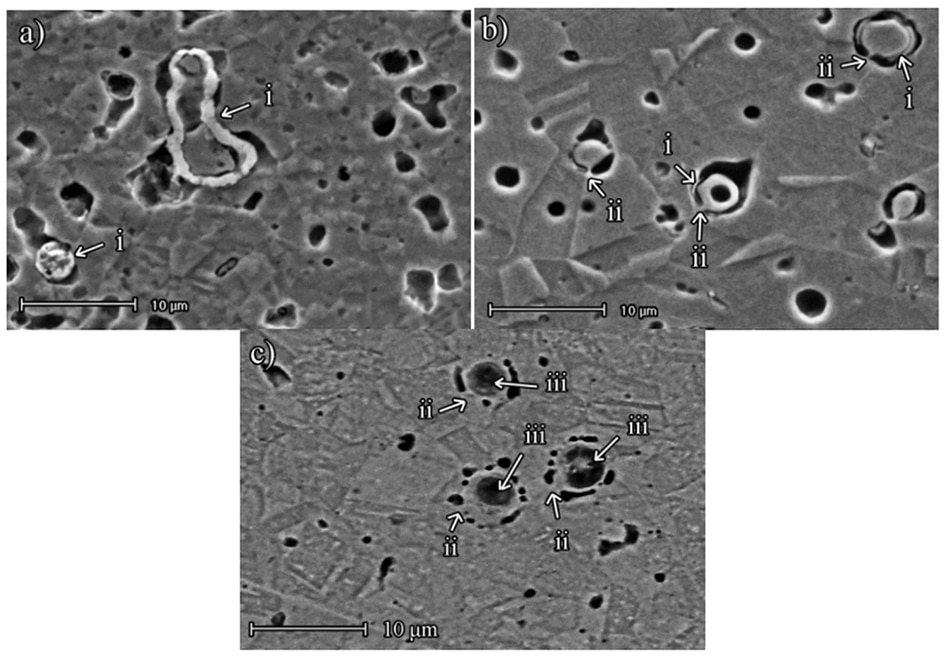
Surface Structure after Different Sintering
Common Application of Invar Alloy
Invar (FeNi36) alloy has wide application due to the two major advantage:
Low expansion alloy: As electronic components become more miniature, FeNi36 alloy can satisfy the requirement of very close dimensional tolerances and high cleanliness with exceptional stamping or chemical etching performance.
Sealing alloy: FeNi36 is the suitable sealing metal, it has associate properties match to the materials with specific properties in electronics, like physical, chemical or optical characteristics.
FeNi36 as the specific nickel-iron alloy, has the crucial role in various household controls and office appliances. It is the controlled expansion nickel-iron alloys, which is essential parts of bi-metals and thermostats. FeNi 36 has vast numbers of household and office appliances. Such as: electric irons, electric toasters, gas cookers, fire safety cutoffs, computer terminals, TV screens, shadow masks&frames, cathode ray tube gun part. Invar alloy also has the wide application for advanced electronic components, filters in mobile-phone network, tank membranes.
FeNi36 Thermostat
FeNi36 is used for the thermostat of electric immersion heaters in domestic and commercial water heating systems. The operation of thermostat is based on the differential expansion between the brass tube and inner FeNi36 rod, the resulting movement will actuate as a micro-switch with adjustable temperature set between 48-83℃.
Cathode Ray Tube
As the low CTE of FeNi36 in temperature range from -100 to 200℃, it is very useful for specific applications in high-tech industry. The television and display screens require properties of greater comfort, higher contrast, improved brightness and sharp definition. All these requirement are possible by shadow masks from FeNi36 strip, which has low CTE with precise dimensions even in changing temperature.
Application Areas
FeNi36 is suitable for applications with high dimensional stability in temperatures, or expansion characteristics matched other materials. Including: telecommunications, aeronautical and aerospace engineering, cryogenic engineering.
Conclusion
FeNi36 is the most common iron-nickle alloy in electronic industry. ZCMIM has more than 15 years experience in Invar MIM projects. Contact us for your next Invar project.
